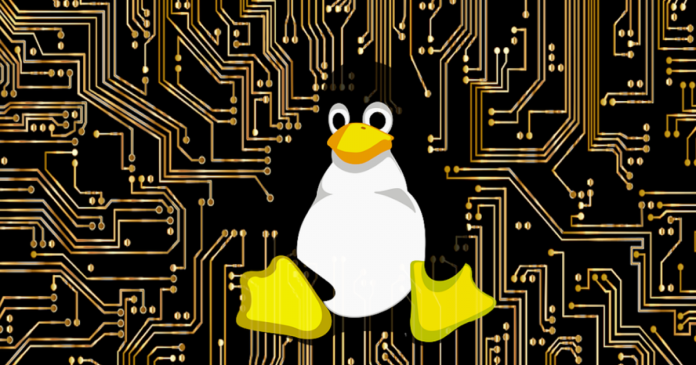Dit bericht verscheen eerder bij FOSSlife
When you have located a file, you can use the touch command to edit its timestamps. For example, the command
touch ‑a grocery list.txt 1410311200.00
would change the access time to noon on October 31, 2014, and you can use the same date format after ‑m to change the last modification time. Similarly, ‑t=<YYMMDD.ss> changes the date and the time that the file was created. Also note that the time starts with the last two digits of the year and ends with the seconds.
Compressing and Archiving
Compression is less essential now than it was in the days of 100MB hard drives, but it continues to be important for creating backups or sending files as email attachments. The Bash shell includes four commands for compression: the original tar, gzip, bzip2, and – more rarely – cpio.
When you exchange files with users of other operating systems, use gzip so they can open the archive. Gzip’s basic use is straightforward, with a list of files following the command, but you can use a variety of options to control what happens.
To set the amount of compression, you can use the parameter ‑ ‑best <number>, or to set the speed of compression, you can use ‑ ‑fastest <number>. Both are measured on a scale of 1 to 9. Note that you need to use the ‑N option to preserve the original files; otherwise, they will be deleted when the archive is created.
To work with files in a gzip archive, you can use several utilities:
zcatdisplays files in a gzip archive.zcmpcompares files in a gzip archive.zdifflists differences between files in a gzip archive.zgrep,zegrep, andzfgrepsearch for text patterns in gzip-archived files.
One especially useful utility is gunzip, which amounts to an alias for gzip because it uses most of the same options. But, if you can’t be bothered learning another command, you can simply use the command gzip ‑d.
By contrast, the bzip2 command produces archives that are 10 to 20 percent smaller than those produced by gunzip. But, although bzip2 and gzip serve similar purposes, bzip’s options are considerably different. For one thing, you have to specify sub-directories, because bzip2 lacks an ‑r option. For another, you use the ‑z option to compress files and ‑d to decompress. To keep the original files after the archive is created, use the ‑k option.
Like gzip, bzip2 has some related utilities for working with its archives:
bzipcatdisplays the contents of a file in an archive, with the same options as thecatcommand.bziprecoverhelps recover damaged archived files.bunzip2decompresses files.
The differences between gzip and bzip2 can be hard to remember, so many users prefer to rely on the tar command. The tar command not only has the advantage of having options to use gzip and gunzip (‑z) or bzip2 (‑j), but it also offers far more control over exactly how you compress files.
In fact, tar’s options run into the dozens – too many to detail here. For example, you can use ‑ ‑exclude <file> to exclude a file and ‑p to preserve the permissions of a file. If you want to preserve a directory structure, use ‑p. To be safe when decompressing, use ‑k to prevent any accidental overwriting of files.
The tar command also includes its own built-in utilities in many cases. To add one archive to another, use the format
tar --append <tarfile1> <tarfile2>
To update an archive with newer versions of files with the same name, use the ‑u option, or to compare the files in an archive with other files, use the format:
tar --compares <tarfile files>
The fourth compression command, cpio, has fallen out of favor in recent years, probably because its format is non-standard. For example, to create an archive with cpio, you have to pipe ls through it and specify the file for output:
ls | cpio ‑o > <outputfile.cpio>
That said, cpio has even more options than tar, including such powerful alternatives as the ability to archive an entire directory tree and create archives in multiple formats (of which TAR is the only one that is widely used), as well as numerous options to view and edit already-archived files. However, unless you are a system administrator or an old Unix hand, chances are you will rarely see cpio used.
Extending File Management with Globbing
One reason shell commands are so powerful is that they can work with multiple files. With many commands, the easiest way to work with multiple files by entering a space-delimited list directly after the command. However, the most concise and efficient way to handle multiple files is through file globbing.
File globbing refers to the use of regular expressions (often abbreviated to regex), pattern matching, metacharacters, or wildcards. The terms are not quite synonymous, although they are mostly used as if they were. Whatever term you use, it refers to a string of characters that can stand for many different strings.
The most widely used glob in the Bash shell is the asterisk (*), which stands for any number of unknown characters. This glob is especially useful when you want to find files that share the same extension. For instance, the command ls *.png lists all the PNG graphics in the current directory.
By contrast, a question mark (?) stands for any single character. If you enter the command ls ca?.png, the list of matches will include the files cat.png and cab.png but not the file card.png, which contains two characters instead of one after the ca.
From these simple beginnings, globs can quickly become more elaborate. To specify specific characters, you can use square brackets, so that test[12].png locates files test1.png and test2.png, but not test3.png (Figure 8). Also, you can specify a search for a regex at the start (^) or the end ($) of a line. Similarly, you can search at the start of a word with < or the end of a word with > – and these are simply a few common possibilities. Using globs is an art form, and experts rightly pride themselves on their ability to construct elaborate and elegant globs.
Dit bericht verscheen eerder bij FOSSlife














